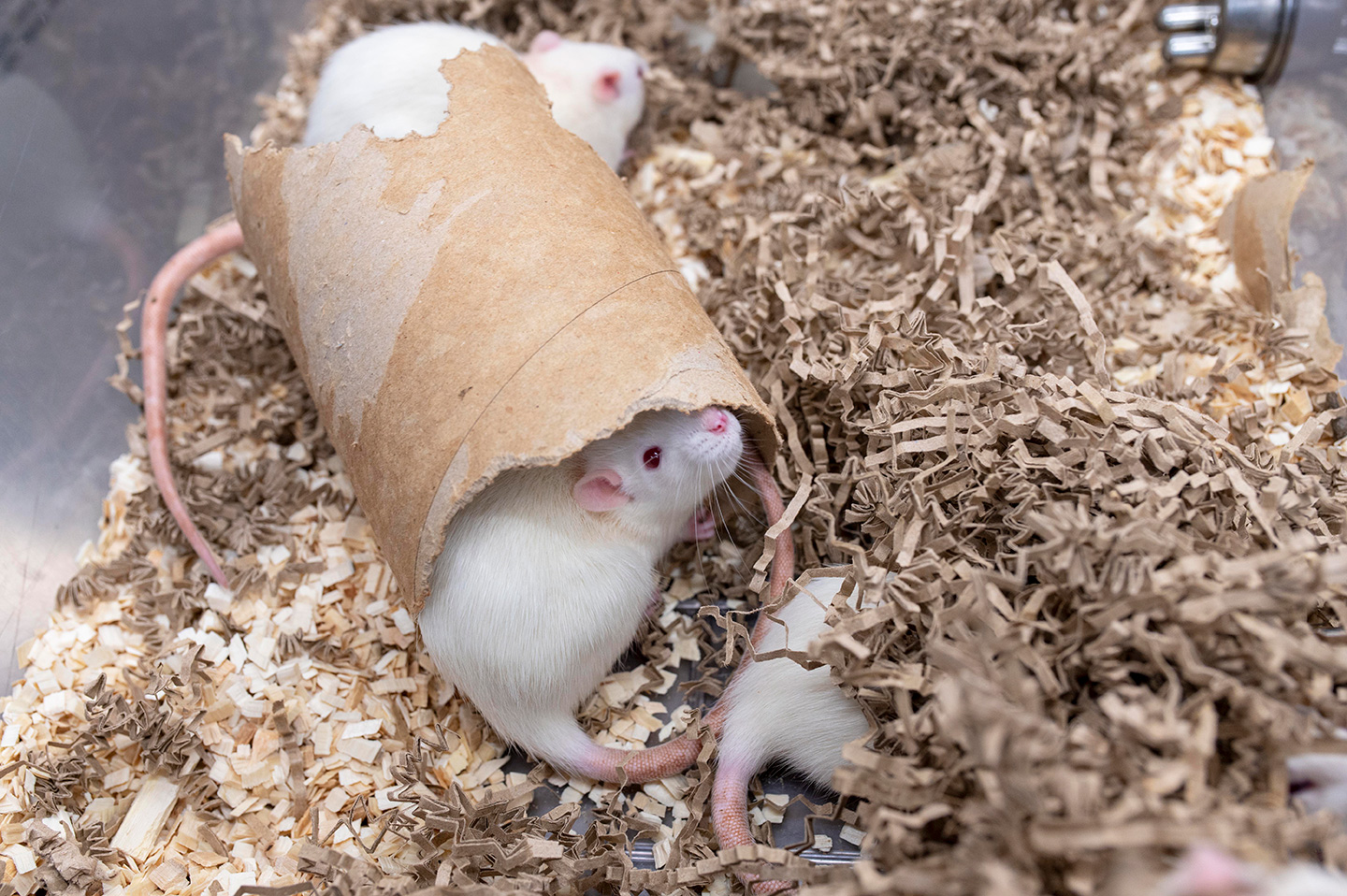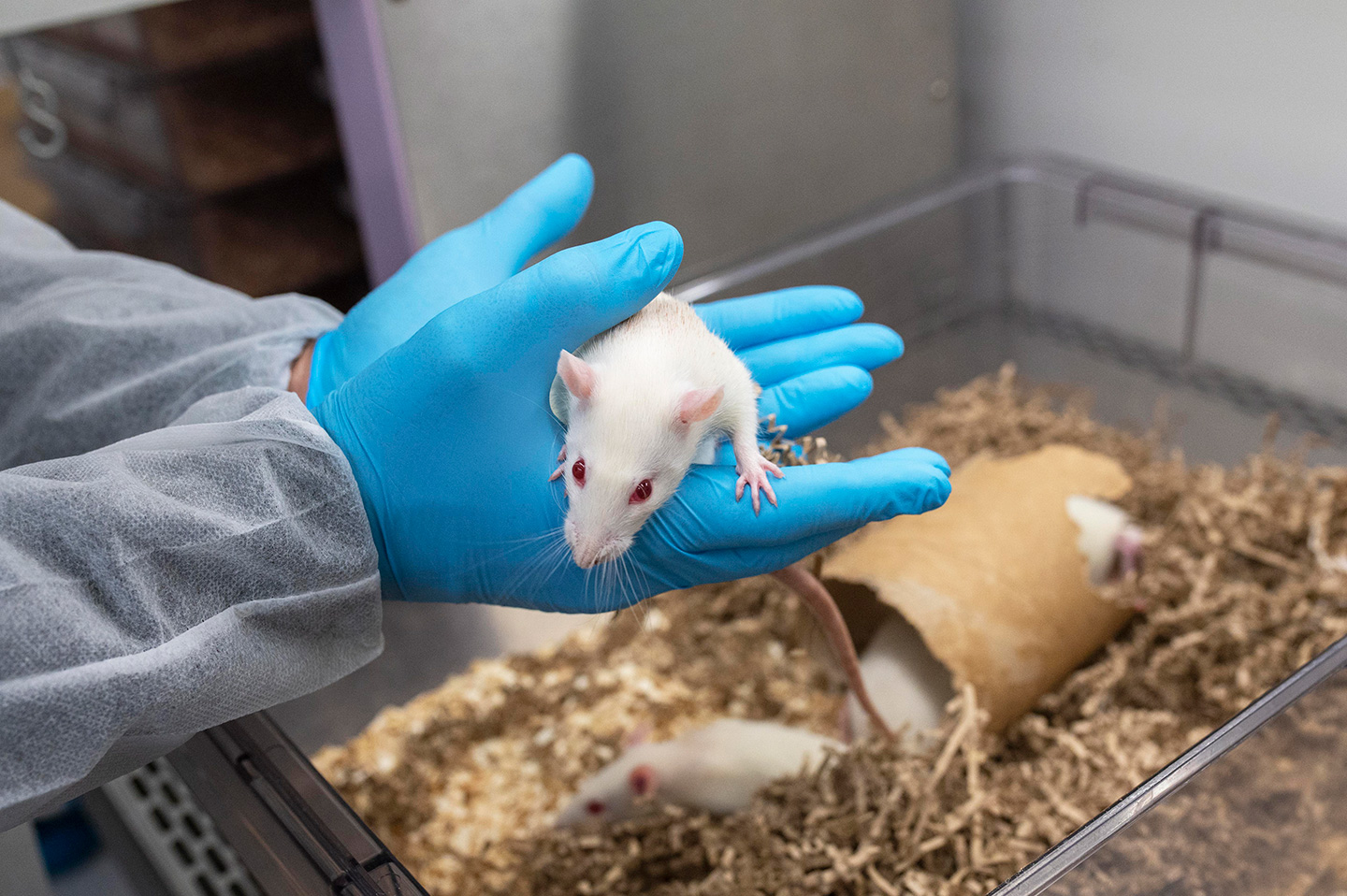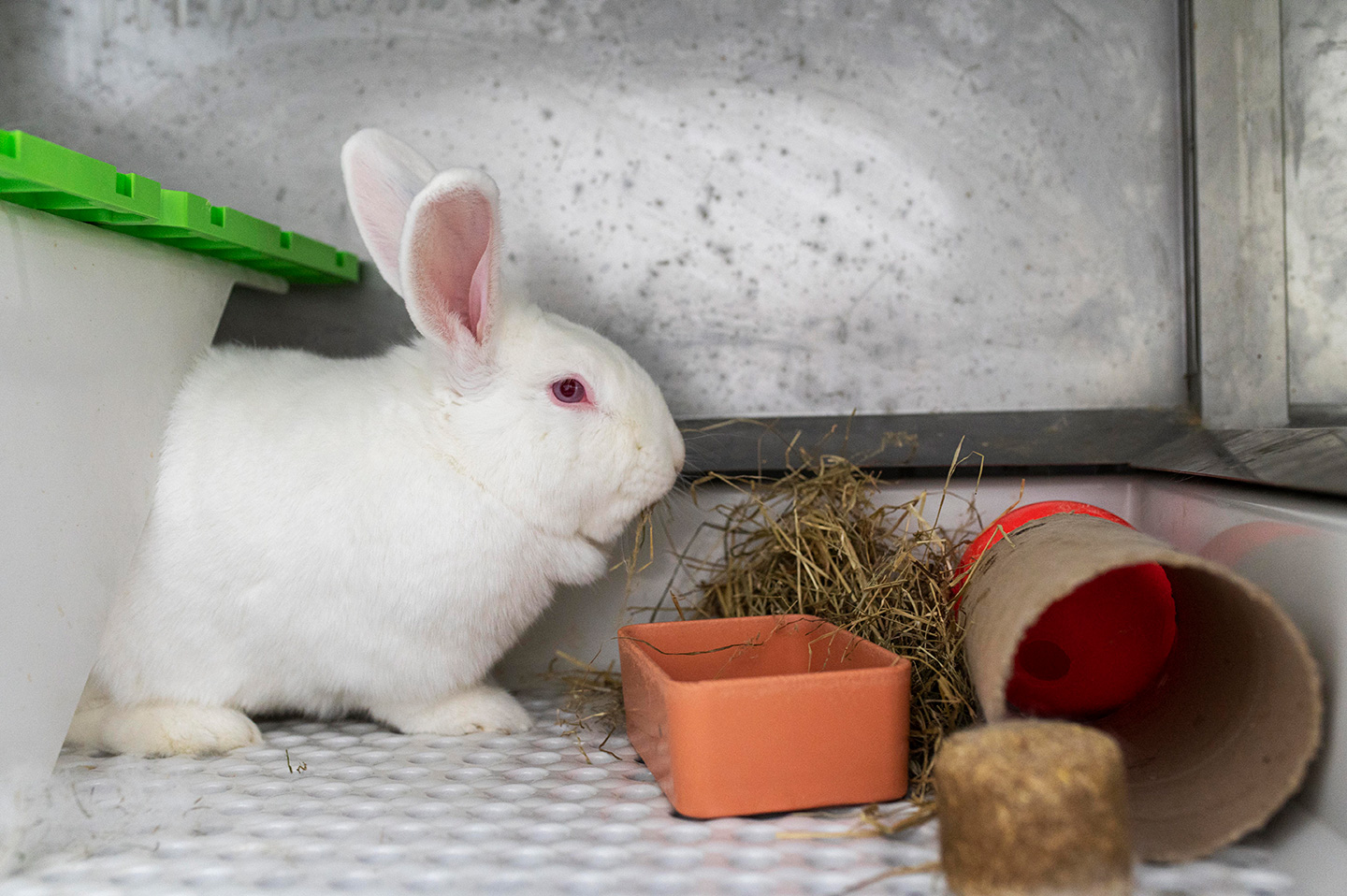Research involving rodents and rabbits
Why Mice
Mice are the most commonly used laboratory animal in the world. Their genetics are very well known and several strains of mice are available that are particularly suited for specific fields of research. Mice can be genetically manipulated and many genetically modified mice are available to study various diseases. Since they are mammals, they share many similarities with humans, but thanks to their small size they are easier to care for and house than other mammals. A lot of standard tests, such as mazes have been developed for mice in research.
About Mice
Mice (Mus Musculus) are small rodents that grow to about 12 cm in adulthood. They are extremely widespread and have been used for research for a long time. They are omnivores and easy to keep and they reproduce quickly.
In Fribourg, Mice represent the vast majority of animals in research, corresponding to between 300 and 4000 animals every year, of which about 1/3 are genetically modified.
Why Rats
Rats are frequently used in research. They are less common than mice, but they are preferred in certain fields of research in which they have characteristics closer to humans than mice. They are also often used to conduct research on intelligence and memory, since they are considered easier to train than mice.
About Rats
Rats are rodents that grow to about 25 cm body length in adulthood. They live in many environments all around the world, including within cities where they are often seen as pests. In Fribourg, around 200 Rats are used in experiments every year.
Why Rabbits
Rabbits are used for specific research where animals larger than rats are required, for example if large amounts of blood are required. Rabbits are also often used in cardiovascular research.
About Rabbits
Rabbits are medium-sized mammals that can grow up to 50 cm and weigh 4.5 kg. Rabbits are herbivores and are often also kept as pets.
In Fribourg, only very few rabbits are used in research, corresponding to 5 animals in 2022 for example.



